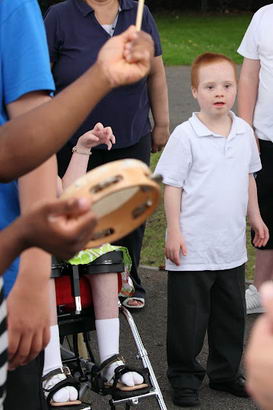Children are active players in their own development. Before and after birth, a child's genes, their environment and their interaction with their family and others affect how they develop. The choices that children make (eg what interests them) also play a part.
Maturation lies at the heart of development. It refers to the biological change that occurs as a child ages. This allows development to occur (eg the brain must develop before language can be produced) (Wilson, 2003).
Look at the interactive NHS guide: Birth to Five Development timeline. Watch the accompanying clips and consider how children develop rapidly at that age.
What are the particular implications for early childhood experiences and environments?

While it is helpful to consider separate aspects of children's development (in terms of looking at typical development or milestones), it is essential to remember that development is a package.
The term 'holistic' is overused. However, in this context, it is a useful way of describing the importance of looking at the 'whole' child. This is essential, because aspects of development are closely interconnected.

Although people often talk about child development as though it is a simple series of ages and stages, it is more complex than this.
At any point, children may also be using strategies from earlier stages of their development. Siegler suggests that learning develops in overlapping waves with children altering their approach in different situations (2005, in Evangelou et al, 2009).
To find out about the different stages of child development take a look at Early Intervention Support's website.

Some children develop differently and do not follow the expected pattern of development. Delayed or atypical development is recognised through comparison with the following typical milestones:
- Typical development: a mainstream or 'normal' pattern.
- Delayed development: follows the typical pattern, but at a much slower pace. The developmental milestones will be reached in the right order, but later than most children.
- Atypical/disordered development: the usual sequence of milestones is not followed; there is something different about the way in which the child develops.
- Borderline development: this lies between the typical and atypical.

Evangelou, M., Sylva, K. and Kyriacou, M., Wild, M. and Glenny, G. (2009) Early Years Learning and Development: Literature Review. Annesley: DCSF Publications (accessed 12.1.12).
Tremblay, R.E., Barr, R.G., Peters R. DeV., Boivin, M. (eds) (2011) Encyclopedia on Early Childhood Development. Montreal, Quebec: Centre of Excellence for Early Childhood Development (accessed 12.1.12)
Wilson, R.A. (2003) Special Educational Needs in the Early Years. London: Routledge.

If you wish to get a broader understanding of this interesting area, take a look at the two publications that follow.
Meggitt, C. (2006) Child Development – Birth to 16 Years: An illustrated guide. Harlow: Heinemann.
Sheridan, M. (revised and updated by Sharma, A. and Cockerill, H.) (2008) From Birth to Five Years: Children's developmental progress (3rd edition). London: Routledge.